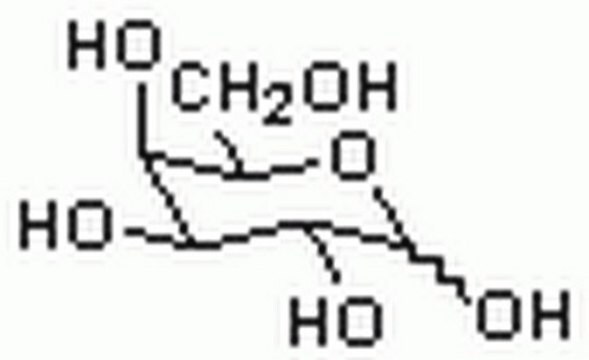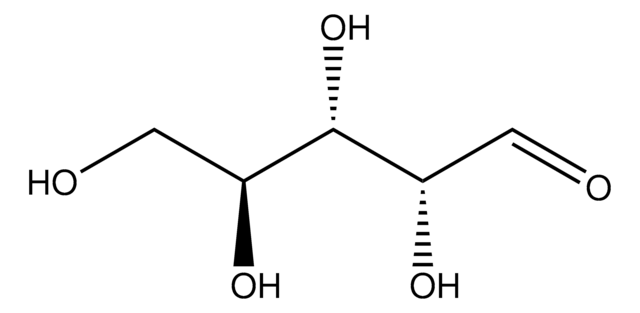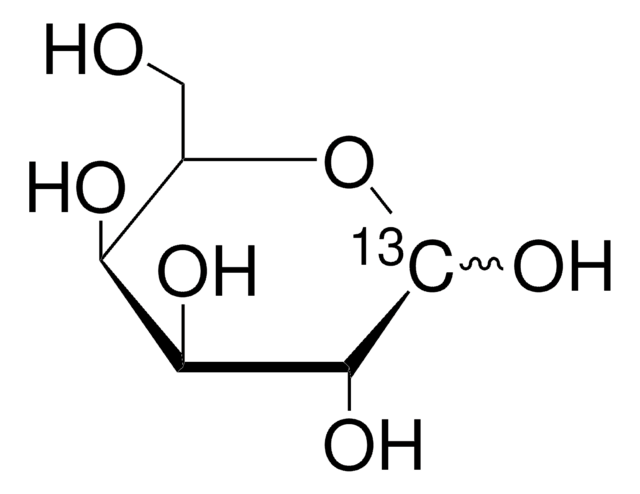G0750
D-(+)-Galactosa
≥99% (HPLC)
Sinónimos:
Galactosa
About This Item
Productos recomendados
biological source
bovine (Ruminant- Cow, Ox, Buffalo)
Quality Level
assay
≥99% (HPLC)
form
powder
technique(s)
HPLC: suitable
impurities
≤0.1% glucose
color
white
useful pH range
5.0-7 (25 °C, 180 g/L)
mp
168-170 °C (lit.)
solubility
H2O: soluble 100 mg/mL, clear, colorless
storage temp.
room temp
SMILES string
OC[C@@H](O)[C@H](O)[C@H](O)[C@@H](O)C=O
InChI
1S/C6H12O6/c7-1-3(9)5(11)6(12)4(10)2-8/h1,3-6,8-12H,2H2/t3-,4+,5+,6-/m0/s1
InChI key
GZCGUPFRVQAUEE-KCDKBNATSA-N
¿Está buscando productos similares? Visita Guía de comparación de productos
Application
- as a component of galactosyltransferase labeling buffer.
- as a supplement in MRS broth for the growth of thermophilic lactobacilli
- to induce the expression of uncoupling protein (UCP) in yeast transformants
Biochem/physiol Actions
Other Notes
Storage Class
11 - Combustible Solids
wgk_germany
WGK 3
flash_point_f
Not applicable
flash_point_c
Not applicable
ppe
Eyeshields, Gloves, type N95 (US)
Elija entre una de las versiones más recientes:
¿Ya tiene este producto?
Encuentre la documentación para los productos que ha comprado recientemente en la Biblioteca de documentos.
Los clientes también vieron
Nuestro equipo de científicos tiene experiencia en todas las áreas de investigación: Ciencias de la vida, Ciencia de los materiales, Síntesis química, Cromatografía, Analítica y muchas otras.
Póngase en contacto con el Servicio técnico







